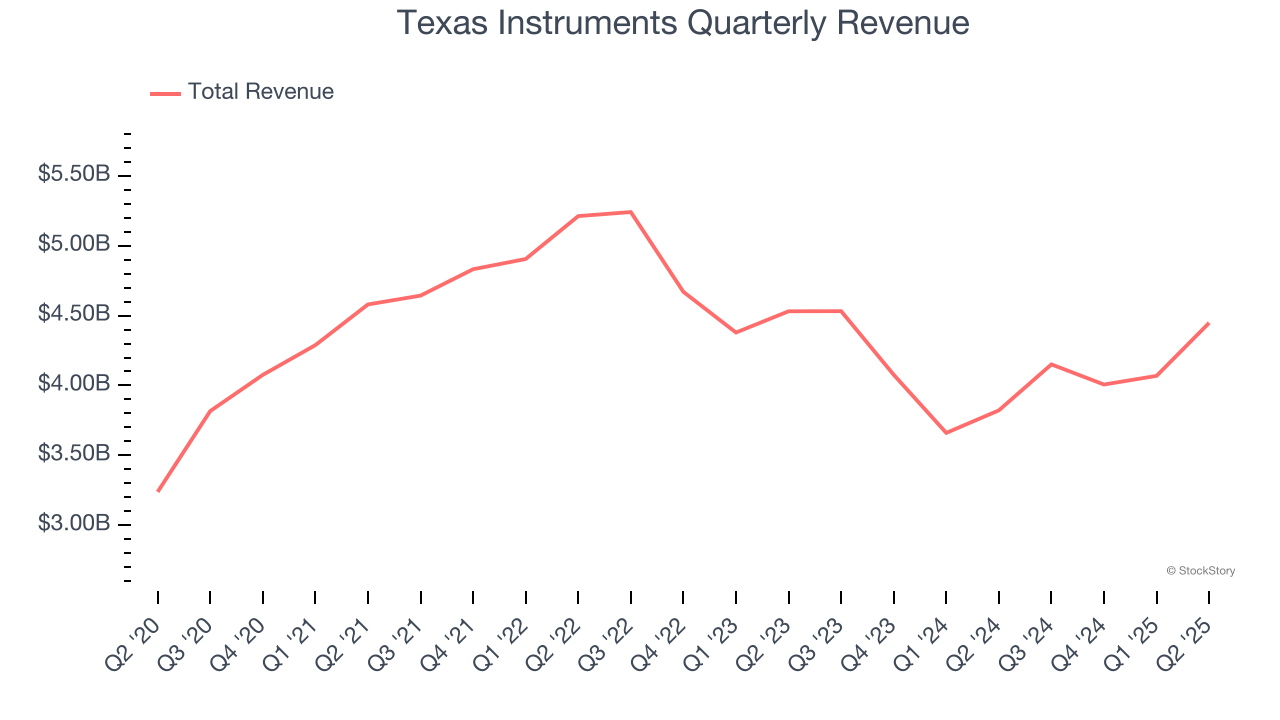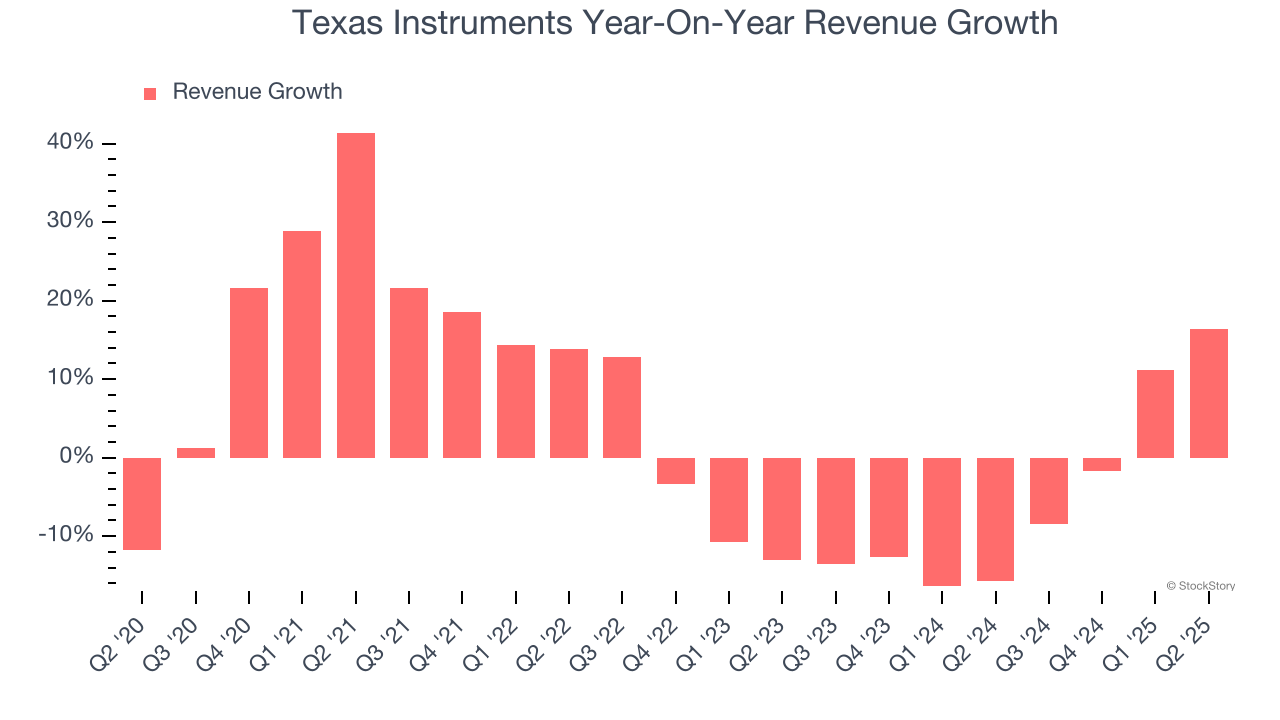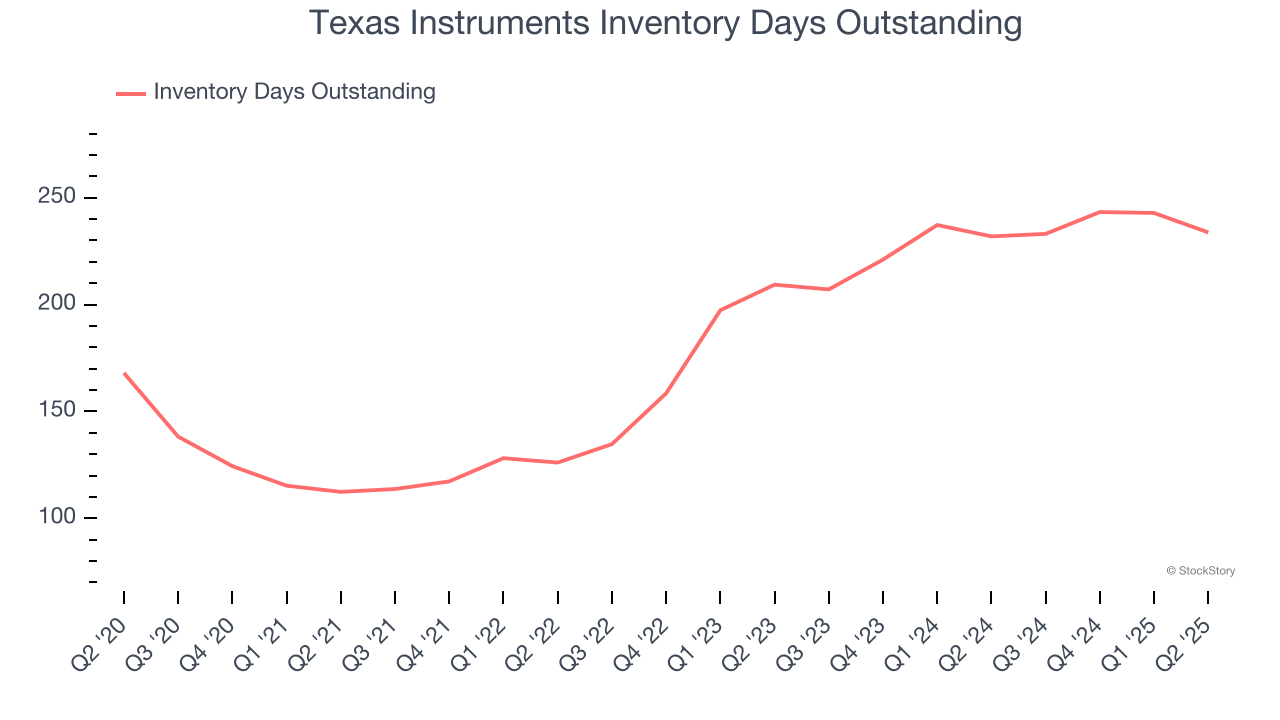
Analog chip manufacturer Texas Instruments (NASDAQ:TXN) beat Wall Street’s revenue expectations in Q2 CY2025, with sales up 16.4% year on year to $4.45 billion. The company expects next quarter’s revenue to be around $4.63 billion, close to analysts’ estimates. Its GAAP profit of $1.41 per share was 5.8% above analysts’ consensus estimates.
Is now the time to buy Texas Instruments? Find out by accessing our full research report, it’s free.
Texas Instruments (TXN) Q2 CY2025 Highlights:
- Revenue: $4.45 billion vs analyst estimates of $4.36 billion (16.4% year-on-year growth, 2% beat)
- EPS (GAAP): $1.41 vs analyst estimates of $1.33 (5.8% beat)
- Revenue Guidance for Q3 CY2025 is $4.63 billion at the midpoint, roughly in line with what analysts were expecting
- EPS (GAAP) guidance for Q3 CY2025 is $1.48 at the midpoint, roughly in line with what analysts were expecting
- Operating Margin: 35.1%, up from 32.7% in the same quarter last year
- Free Cash Flow Margin: 12.5%, similar to the same quarter last year
- Inventory Days Outstanding: 234, down from 243 in the previous quarter
- Market Capitalization: $194.9 billion
Company Overview
Headquartered in Dallas, Texas since the 1950s, Texas Instruments (NASDAQ:TXN) is the world’s largest producer of analog semiconductors.
Revenue Growth
Reviewing a company’s long-term sales performance reveals insights into its quality. Even a bad business can shine for one or two quarters, but a top-tier one grows for years. Unfortunately, Texas Instruments’s 4% annualized revenue growth over the last five years was sluggish. This fell short of our benchmark for the semiconductor sector and is a tough starting point for our analysis. Semiconductors are a cyclical industry, and long-term investors should be prepared for periods of high growth followed by periods of revenue contractions.

Long-term growth is the most important, but short-term results matter for semiconductors because the rapid pace of technological innovation (Moore's Law) could make yesterday's hit product obsolete today. Texas Instruments’s performance shows it grew in the past but relinquished its gains over the last two years, as its revenue fell by 5.9% annually. 
This quarter, Texas Instruments reported year-on-year revenue growth of 16.4%, and its $4.45 billion of revenue exceeded Wall Street’s estimates by 2%. Company management is currently guiding for a 11.4% year-on-year increase in sales next quarter.
Looking further ahead, sell-side analysts expect revenue to grow 10.6% over the next 12 months, an improvement versus the last two years. This projection is particularly healthy for a company of its scale and implies its newer products and services will fuel better top-line performance.
Today’s young investors won’t have read the timeless lessons in Gorilla Game: Picking Winners In High Technology because it was written more than 20 years ago when Microsoft and Apple were first establishing their supremacy. But if we apply the same principles, then enterprise software stocks leveraging their own generative AI capabilities may well be the Gorillas of the future. So, in that spirit, we are excited to present our Special Free Report on a profitable, fast-growing enterprise software stock that is already riding the automation wave and looking to catch the generative AI next.
Product Demand & Outstanding Inventory
Days Inventory Outstanding (DIO) is an important metric for chipmakers, as it reflects a business’ capital intensity and the cyclical nature of semiconductor supply and demand. In a tight supply environment, inventories tend to be stable, allowing chipmakers to exert pricing power. Steadily increasing DIO can be a warning sign that demand is weak, and if inventories continue to rise, the company may have to downsize production.
This quarter, Texas Instruments’s DIO came in at 234, which is 57 days above its five-year average. These numbers suggest that despite the recent decrease, the company’s inventory levels are higher than what we’ve seen in the past.

Key Takeaways from Texas Instruments’s Q2 Results
While Texas Instruments beat analysts’ revenue and EPS expectations this quarter, revenue and EPS estimates for next quarter were just in line. It seems that the market was hoping for the strength this quarter to be reflected in the guide, and as a result, shares traded down 7.2% to $199.50 immediately following the results.
Should you buy the stock or not? When making that decision, it’s important to consider its valuation, business qualities, as well as what has happened in the latest quarter. We cover that in our actionable full research report which you can read here, it’s free.
